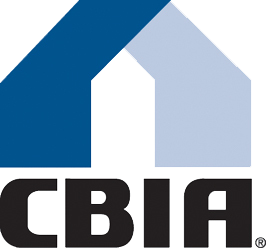Image from StreetWise Journal
by Phillip B. Burum, Executive Vice President, Diversified Pacific,
President, Building Industry Association (BIA) Baldy View Chapter
Many in the Mid-Atlantic region of the east coast may disagree but spring is upon us in sunny Southern California. With the change in weather we enter a season dedicated to the benefits of homeownership in America. Homeownership’s ‘season’ starts with National New Homes Month in April, followed by National Remodeling Month in May and rounding out with National Homeownership Month in June.
April’s National New Homes Month is intended to celebrate of the innovations in the building and manufacturing trades that makes the new American home a marvel of modern technology and design.
New homes are growing increasingly healthier and environmentally-friendly. Nationwide, more builders are incorporating ‘green’ or environmentally friendly products or practices into their products with nearly a quarter of American homes now certified to a green standard. In the Baldy View Region, nearly all of the homes built exceed industry standards which means that new homeowners will save money on energy costs while reducing the impact on the environment.
These innovations can make owning a new home more economically beneficial than an existing home because homebuyers can avail themselves of the comfort, safety, durability and security of a newly constructed home at about the same, or lower, level of investment as an existing home. While mortgage payments will be greater with the higher purchase price of a newly-built home, the lower operating costs mean the homebuyer will have annual costs that are about the same as if they'd bought a lesser-priced, older home with a smaller mortgage payment and higher operating expenses. In a prior article, I espoused the economic advantages of new homes versus resales so I will resist the temptation to repeat how much time one should spend examining the cost of use.
It is worth one last mention, however, of the reduction in a new home’s impact on the environment versus a home built 20 years ago or more. New homes in California use 50 percent less water and consume less than 57 percent of the energy of older homes. Not many opportunities offer us the chance to make such a difference while maintaining the creature comforts that we have all grown accustomed to.
It’s also about the design. Today’s new homebuyer, according to surveys from the National Association of Home Builders (NAHB), has given way to practicality, focusing more on function than form. Less is definitely more, with most homebuyers looking for open floor plans centered on the family gathering places. Near the top of the list of trends in 2018, however, is flexibility in design. Bedrooms that are easily converted into offices may not be enough any longer as today’s buyers are looking for options to create prep kitchens out of storage areas or full living areas out of unused garage space.
The ability to customize a home to suit the individual is a major factor in why many would only consider a new home. Whether you are a gourmet cook looking for an extended kitchen or if you are planning ahead for taking care of aging parents (or a boomerang child), customizing your floor plan to suit your specific needs has limitless value.
A new home’s structure and its components are built to last. According to the NAHB/Bank of America Home Equity Study of Life Expectancy of Home Components, all types of modern insulation in a new home can be reasonably expected to last a lifetime if properly installed and protected against punctures, moisture and ultraviolet rays. Windows, whether they are wood or aluminum framed, can last decades if properly maintained. Thanks to scientific advances in paints and coatings, today's home exterior paint can last up to two decades. While the life expectancy of a roof depends on local weather conditions and appropriate maintenance, the study found that roofing should last between a quarter and half century, depending upon the materials used.
Studies like these enable home builders to meet the needs and wants of today’s – and future – homebuyers and their families – and why today’s new home is both the finest home ever built and the best investment most Americans will ever make in their lifetimes.

































